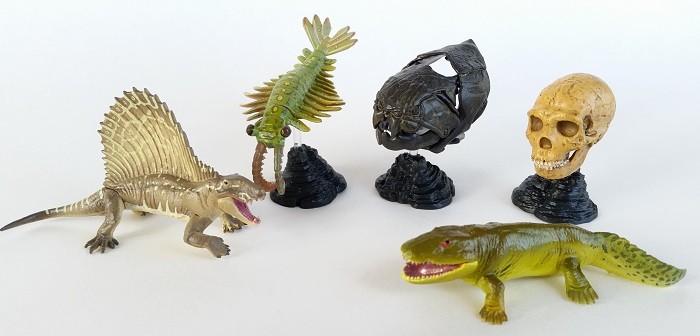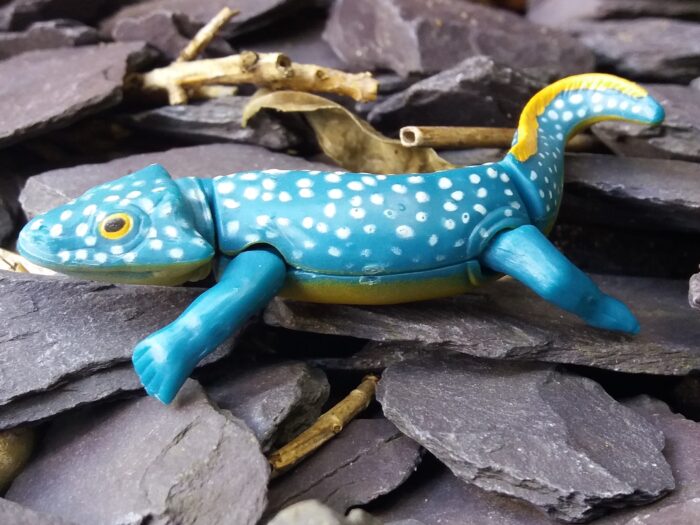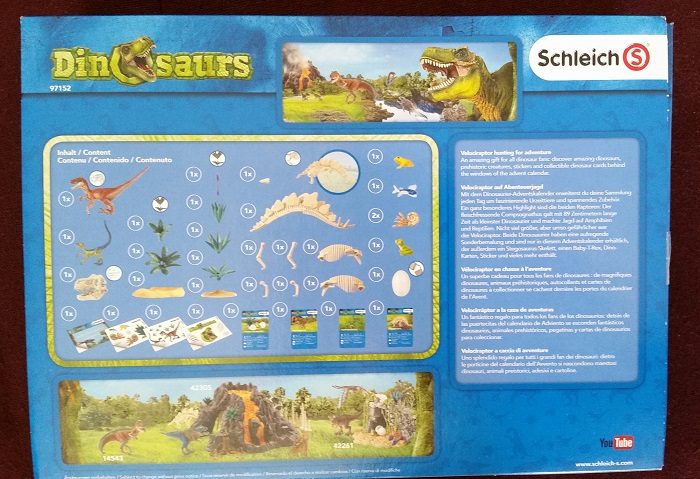My sincerest thanks to Happy Hen Toys for their generosity in sending me this figure to review here. This figure is for sale over there, along with many more prehistoric animals from numerous fan favorite brands like CollectA, Haolonggood, PNSO, Safari Ltd, and so many more.
Classification: Amphibian
Review: Deltasaurus (Lost Kingdoms series B by Yowie)
Review: Dimetrodon (Revell/Prehistoric scenes by Aurora)

Aurora seemed to be quite an interesting line. Though showing most of the dinosaurs and other prehistoric creatures in the form of movie monsters, they still provide great figures with articulation and scenery to match. Their models were later reissued by Revell, allowing people to get a selection of their models again.
Review: Eternal lost breeds, Extinct animal (Takara Tomy A.R.T.S)

Despite the progress we have made as a species, there is one fact we cannot change: extinction is forever. As a result of our hubris, many spectacular species have been wiped from the face of the earth. Takara have created quite an exquisite set, showing a selection of the species that have been lost of the centuries, each with a stand stating scientific names and year of extinction.
Review: Mastodonsaurus (Starlux)

In spite of the discoveries since Starlux closed down, I feel that the old line could be fantastically varied in comparison to some modern line, producing vast numbers of species, not just familiar dinosaurs, but those that existed alongside them. Here, for example, the giant amphibian Mastodonsaurus from the late Triassic, which reached lengths of 13-20 feet long.
Review: Ancient Fossils (Toob by Safari Ltd)
Review: Flat-headed Amphibian/Siderops (Lost Kingdoms Series A by Yowie)

Even amongst collectors Yowie isn’t a well known company I dare say, so here’s a short introduction… Yowie is an Australian publishing brand that developed the mythical Yowie kingdom with stories and toys concentrating mostly on the Australian fauna. In the mid 90’s Yowie approached the British confectionery company Cadbury with the idea to market the toys with sweets as a vehicle.
Review: Acanthostega (Dinotales Series 2 by Kaiyodo)

The murky pond lays silently in the riparian forest of the Late Devonian, 365 mya. Dragonfly like insects soar and hunt for smaller airborne relatives, their quiet buzzing is the only sound disturbing the lethargic scene. A pair of those hunters engages is their distinct mating ritual, the “heart”.
Review: Dusty the Diplocaulus (Paleo Pals)

Dr. Robert Bakker was speaking more literally than figuratively when making the above statement regarding the genus in question (he has excavated numerous fossils of this particular animal), but there is also a genuine seal of approval in there from the esteemed paleontologist.
Review: Tiktaalik (Paleozoo)

It’s easy to think of evolution as a linear process, where one species in the fossil record gives rise to the next in an ever-improving, ever-ascending ladder. But the reality is messier. It’s more like a bush with lots of dead-end branches–any one specimen is unlikely to be our direct ancestor, but many of the transitional forms we find in the fossil record would have been, at least, pretty close relatives of our direct ancestors.
Review: Dinosaur Advent Calendar 2016 (Schleich)
Review: Leaps in Evolution (Kaiyodo)

From July-October 2015, the National Museum of Nature and Science in Tokyo hosted an exhibit called “Leaps in Evolution: Tracing the Path of Vertebrate Evolution.” To commemorate the exhibit, Kaiyodo made a set of five vending machine capsule figures, most representing a stage in the evolution of vertebrates.







